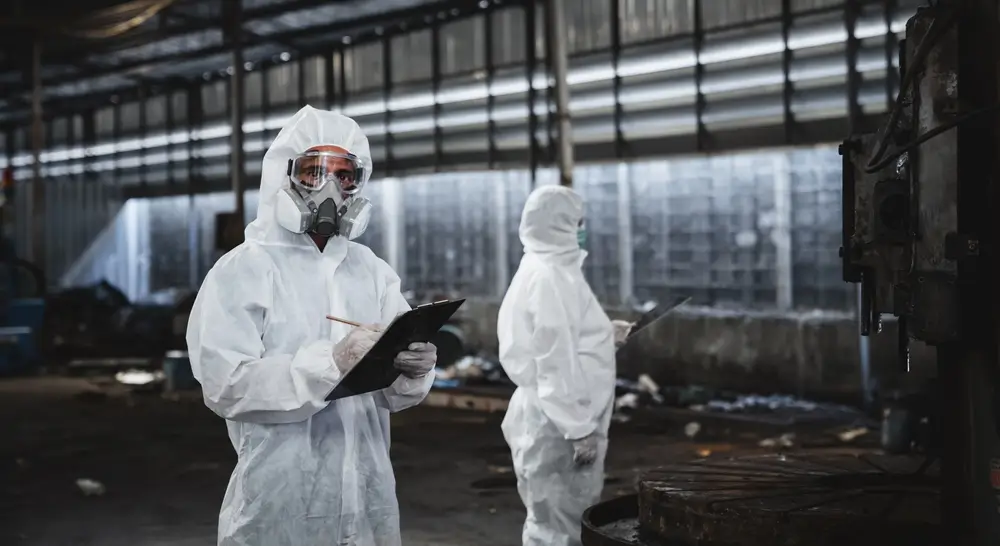The holiday season often means fewer people on-site, shorter hours, and less direct supervision in labs, clinics, and healthcare facilities. While many operations slow down, biosafety waste management cannot be paused. Improper handling or delayed disposal of medical or hazardous waste during this period can create serious safety risks. When fewer trained staff are present, the potential for missed steps and mistakes increases, especially in handling biohazards, sharps, or chemical waste.
This article outlines how to manage biosafety waste effectively during holiday downtime, reduce risk for remaining staff, and avoid accidents or non-compliance due to low supervision.
Understand the Types of Waste Generated
Not all biosafety waste is the same. During holidays, facilities may still produce:
- Sharps waste (needles, blades, etc.)
- Pathological waste (tissues, samples)
- Chemical and pharmaceutical waste
- Microbiological cultures and stocks
- Soiled PPE and contaminated disposables
Understanding which waste types are still in use helps identify what protocols should stay active during low-staff periods. If certain procedures or labs continue running over the break, their waste streams also continue and must be monitored.
Create a Holiday Waste Management Plan
Before the holiday period begins, supervisors should develop a written plan for biosafety waste collection and disposal. This plan should identify:
- Which teams or units will remain operational
- The type and amount of waste expected
- Who will be responsible for managing each waste stream
- Backup contacts for emergencies or overflow
Posting this plan in common areas (like break rooms, lab doors, and waste storage areas) gives clear direction to on-duty staff and reminds them of safe waste practices.
Designate Holiday Waste Coordinators
With fewer staff present, responsibilities often shift. Appoint a small number of trained personnel as temporary “waste coordinators” during the holiday period. These individuals should:
- Know how to properly segregate and store different types of waste
- Check that all containers are labeled and closed correctly
- Keep track of pickup schedules or storage limits
Coordinators don’t need to handle all waste directly, but they should guide others and report any problems that arise.
Set Safe Waste Storage Limits
During holidays, waste disposal services may be delayed or limited. If pickups are missed, containers can overflow. This increases the risk of contamination, odor, and accidental exposure. Facilities should:
- Confirm holiday pickup schedules with waste contractors in advance
- Set internal maximum storage times for each type of waste (e.g., 7 days for infectious waste)
- Use secondary containment bins in case of spills or overfilling
If storage will exceed the normal limits, identify a clean, secure holding area away from workspaces and public zones.
Review Container Placement and Labeling
In low-staff conditions, mistakes in waste disposal are more likely. Review the placement of waste containers in all active work areas to make disposal simple and clear.
Use:
- Red bags or containers for infectious waste
- Puncture-resistant bins for sharps
- Clearly labeled drums for chemical waste
Make sure all labels are easy to read and indicate the type of waste, the origin (lab or unit), and the date it was sealed.
Provide Extra PPE and Disinfectants
Remaining staff may not have quick access to supply rooms over the holidays. Provide extra PPE near waste areas, including gloves, masks, and eye protection. Hand sanitizers and surface disinfectants should also be stocked nearby.
These simple supplies help reduce cross-contamination risk when waste bins are accessed or moved. Make PPE availability part of your pre-holiday checklist.
Train Holiday Staff in Basic Waste Protocols
Some staff who work holidays may not usually handle waste or might be temporary personnel. Before the break starts, provide a short refresher training on:
- How to identify and separate different types of biosafety waste
- What PPE is required when handling each type
- What to do in case of spills, leaks, or needle sticks
This training can be done in-person, with handouts, or through a quick digital module. Simple, clear instructions go a long way in preventing dangerous mistakes.
Monitor Waste Storage Temperatures (If Needed)
Some waste, especially pathological materials or certain chemicals, must be stored at specific temperatures. Refrigerators and freezers used for temporary waste storage should be monitored during the holidays. Assign someone to:
- Check temperatures daily
- Log readings
- Notify maintenance if units fail
Losing refrigeration during a low-staff period can result in biological hazards and regulatory violations.
Prepare for Spill or Exposure Incidents
Despite precautions, accidents can still happen. Every facility should have a simple incident response protocol available during the holidays. It should include:
- What to do if a container leaks or breaks
- How to report a needle stick or exposure
- Contact numbers for biosafety officers or health services
- The location of spill kits and first-aid supplies
Posting this information clearly in waste areas helps temporary or new staff respond quickly without confusion.
Keep Emergency Contacts Readily Available
Not all biosafety staff will be on-site. Still, someone from the biosafety or environmental health team should be available on-call in case of a major issue. Their contact numbers should be:
- Posted in labs and utility areas
- Shared with front desk or security staff
- Included in the holiday waste plan
Make sure on-duty staff know they’re allowed (and expected) to call for help if something goes wrong, better a false alarm than a serious violation.
Conclusion
The holiday season brings a unique set of challenges for labs and clinical facilities, especially when it comes to managing biosafety waste. With fewer trained personnel available, the risk of mishandling, overfilling, or ignoring proper disposal procedures goes up. But with clear planning, designated roles, and simple safety reminders, facilities can stay compliant and safe, even when running on a skeleton crew.
Thinking ahead, communicating well, and making safety steps easy to follow will help protect not only the environment and the public, but also the staff who remain on duty when most others are away.



